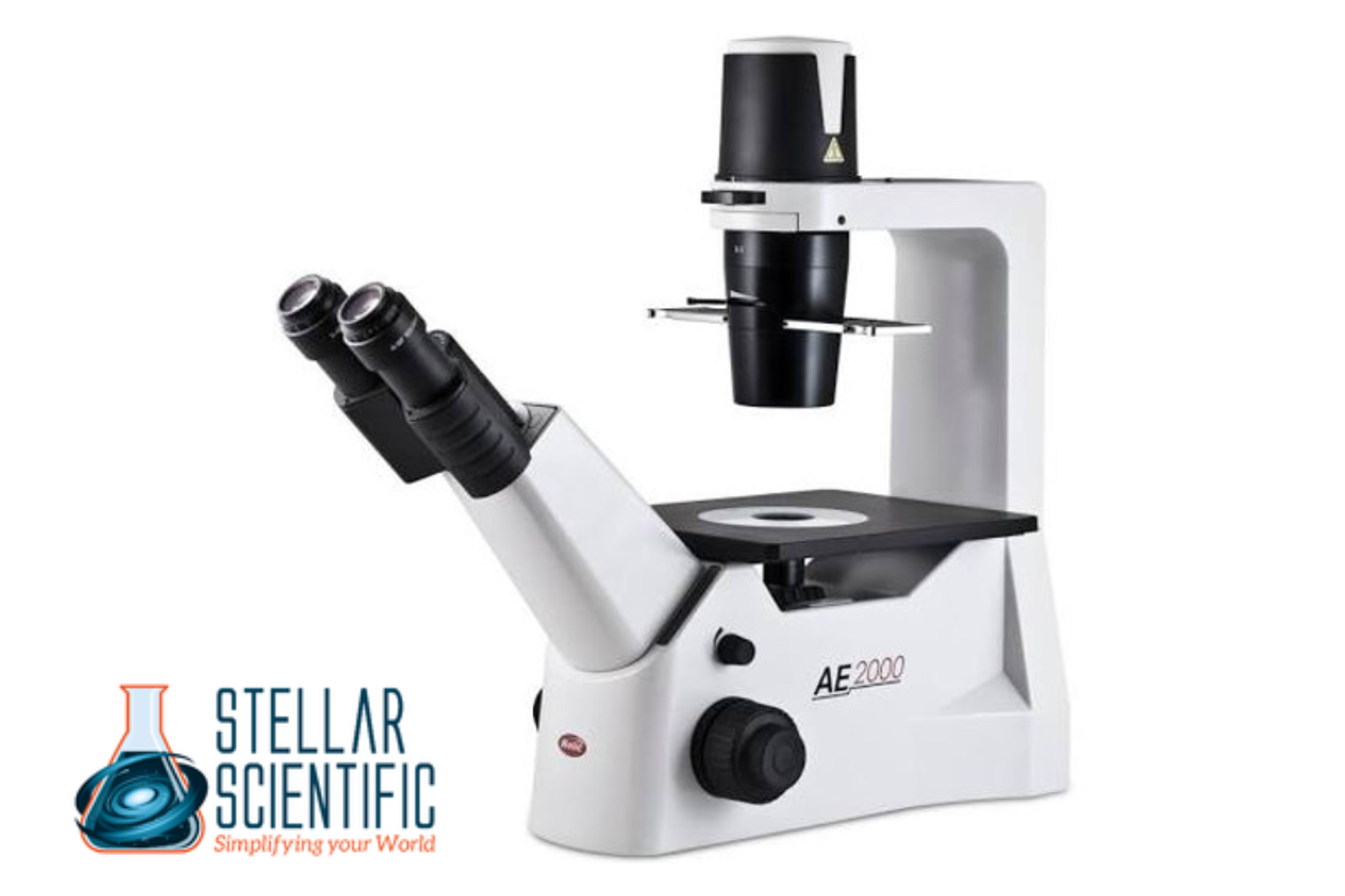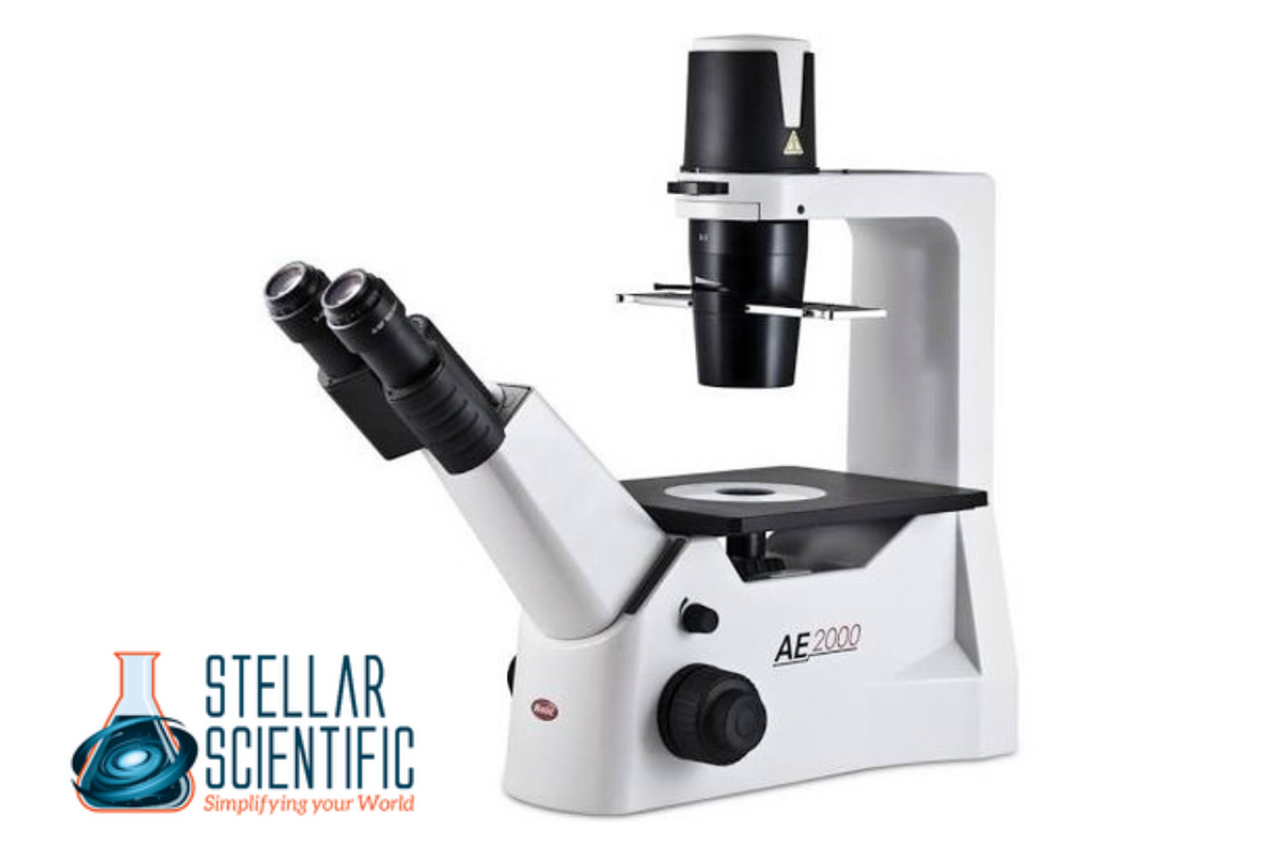In today’s fast-paced world of scientific research, accuracy, clarity, and efficiency are more important than ever. For scientists working with live cells, cultures, or samples in liquid media, traditional upright microscopes often present limitations. This is where Motic inverted microscopes come into play—designed to meet the specific needs of cell biology, microbiology, pharmaceutical development, and industrial quality control.
Motic, a globally recognized manufacturer of high-performance microscopy solutions, has built a reputation for delivering reliable and cost-effective instruments. Their line of inverted microscopes continues to empower researchers with powerful tools to explore biological processes, monitor cell cultures, and conduct long-term observations.

What Is an Inverted Microscope?
An inverted microscope is designed with the light source and condenser located above the stage, while the objectives and turret are positioned below the stage. This configuration differs from traditional upright microscopes, where the objectives are located above the specimen.
This design is especially useful for viewing specimens that are contained in flasks, Petri dishes, or multi-well plates—environments where cells grow at the bottom of the vessel. Instead of turning the container upside down or disturbing the sample, inverted microscopes allow scientists to observe the specimen in its natural orientation.
Advantages of Motic Inverted Microscopes
Motic has engineered its inverted microscopes to meet the precise demands of modern laboratories, balancing affordability, performance, and innovation. Some key advantages of these microscopes include:
1. Optimized for Live Cell Imaging
Inverted microscopes are ideal for observing living cells in real-time. Since the cells remain undisturbed in their culture containers, researchers can study their natural behaviors—such as growth, division, or response to stimuli—over extended periods. Motic’s inverted models often include phase contrast or fluorescence capabilities for even more detailed insights.
2. High-Quality Optics
Motic integrates plan achromatic and plan phase contrast objectives in many of their models. These lenses ensure a flat field of view with excellent contrast and sharpness, which is essential when identifying subtle changes in cell morphology or counting colonies.
3. Ergonomic and User-Friendly Design
From intuitive control knobs to a compact footprint, high-quality Motic inverted microscopes are designed to enhance workflow and reduce operator fatigue. Features like long working distance objectives and easy access to the specimen stage support routine and prolonged usage, making them ideal for demanding lab environments.
4. Versatility Across Applications
Motic’s inverted microscopes are widely used in several fields, including:
- Cell culture observation
- Tissue engineering
- Pharmaceutical research
- Fertilization studies
- Environmental water testing
- Industrial inspection
They’re compatible with a variety of containers and accessories, making them adaptable for both educational and research settings.
Key Models in the Motic Inverted Microscope Line
Motic offers several models that cater to different user needs, from entry-level educational microscopes to research-grade systems. Here are a few notable options:
Motic AE2000 Inverted Microscope
The Motic AE2000 is a popular choice in academic and clinical labs. With its ergonomic layout and built-in Phase Contrast, it is ideal for routine cell culture monitoring. The AE2000 also includes an integrated anti-fungal optical system, making it a durable and practical investment for laboratories concerned with contamination and longevity.
Motic AE31 Elite
Designed for advanced research, the AE31 Elite offers modularity and performance. It features an Infinity Optical System (CCIS®), allowing for upgraded contrast techniques, including fluorescence. The AE31 is suitable for high-throughput labs needing precision imaging and documentation of live cells.
Motic AE2000MET
For industrial applications, such as material inspection or quality control, the AE2000MET series offers robust metallurgical capabilities. It includes reflected light illumination and specialized objectives for examining opaque samples, including metal surfaces, coatings, and electronic components.
Applications Across Scientific Fields
Motic inverted microscopes are more than just optical instruments—they are essential tools for discovery. Here’s how they’re making an impact across industries:
Biomedical Research
In cell biology and medical research, inverted microscopes allow for non-invasive observation of live cells, crucial for studying cancer development, regenerative medicine, and drug effects. They support time-lapse imaging, enabling researchers to monitor cellular responses to experimental treatments.
Pharmaceutical Development
Drug discovery and toxicity testing often rely on monitoring cultured cells over time. Motic microscopes provide clear, reproducible imaging for screening compounds, evaluating cytotoxicity, and conducting preclinical research.
Environmental Science
Microbiologists and ecologists use inverted microscopes to assess water quality and aquatic microbial populations. Motic's reliable imaging enables accurate identification and quantification of microorganisms in environmental samples.
IVF and Fertility Clinics
Inverted microscopes are used in in-vitro fertilization (IVF) procedures for sperm analysis, egg fertilization, and embryo monitoring. Motic models offer precision and clarity needed for these highly sensitive applications.
Imaging and Documentation
Digital imaging has become an essential part of modern microscopy. Many Motic inverted microscopes are equipped with or compatible with digital camera systems and Motic Images Plus software, enabling:
- Image capture and time-lapse recording
- Measurement and annotation tools
- Data sharing and archiving
This integration supports teaching, collaborative research, and compliance with lab documentation standards.
Maintenance and Longevity
Maintaining an inverted microscope involves regular cleaning of lenses, ensuring proper illumination, and handling the equipment with care. Motic designs its systems with durability and ease of maintenance in mind. By following recommended usage and sterilization procedures, users can significantly extend the lifespan of their microscope and ensure consistent performance.
Choosing the Right Motic Inverted Microscope
When selecting a microscope, consider your application needs, desired features, and budget. Motic provides options tailored for teaching labs, clinical settings, and high-end research environments. Key considerations include:
- Optical quality (objective type and magnification)
- Illumination options (LED, halogen, fluorescence)
- Contrast methods (Brightfield, Phase, Fluorescence)
- Imaging capabilities (camera integration, software compatibility)
Consulting with a knowledgeable supplier like Stellar Scientific can help match you with the right instrument for your workflow.
About Stellar Scientific
At Stellar Scientific, we proudly supply laboratories with high-quality equipment, including Motic inverted microscopes. Our mission is to support your research and diagnostic goals with dependable products and expert service. From microscopy to cell culture, sample storage, and beyond, we offer a wide range of laboratory essentials designed for accuracy and efficiency. Whether you're running a research lab, biotech startup, or academic program, our carefully curated inventory and responsive support team are here to help.


